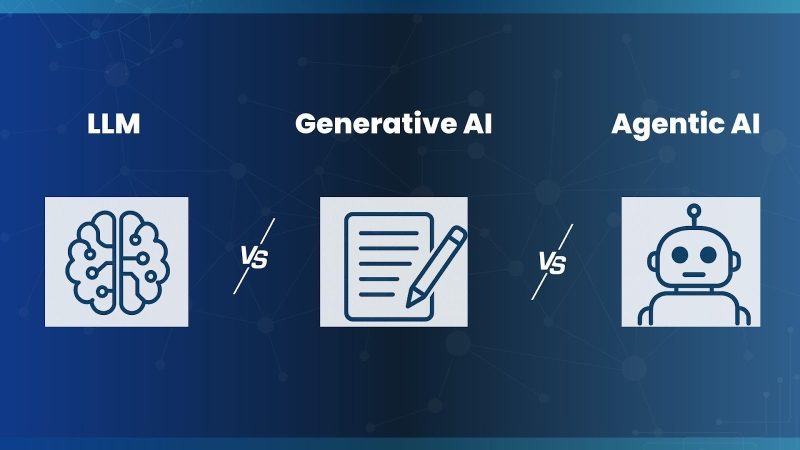How to build scalable applications in Salesforce?

Introduction
Salesforce is considered one of the most used CRM platforms available in the cloud. Businesses of all sizes have relied on the software for its ability to improve and run their operations, enhance customer relationships, and ultimately facilitate sales. Rightly so, as Salesforce has almost monopolized the space for enterprise applications consideration, with over 150,000 businesses using Salesforce for all their CRM needs. Businesses in their growth phases often encounter scale issues. Making scalable applications in Salesforce is the method to guarantee that the system can efficiently handle a greater volume of data, users, and transactions.
In this blog, we will explore core strategies for building scalable Salesforce applications with the best performance and reliability. The same strategies are worked on by many Salesforce development companies to aid businesses in expanding.
Understanding Scalability in Salesforce
Scalability becomes an important consideration in any application developed in the sales force to perform increasing data loads and increasing user demand without degrading the performance of the application. Due to that optimization of the resources of the system, the business can move ahead without hindrance.
What Does Scalability Mean?
Scalability refers to the ability of a Salesforce application to scale in terms of handling the increase in users, load, and volume of data without sacrificing performance delivery.
Challenges of Scalability:
- Government limits: Salesforce strictly enforces governor limits that define small units of resource consumption for its applications. Exceeding this limit leads to performance issues.
- Performance Bottlenecks: Inefficient Apex code, queries that go without optimization, and large amounts of data processing slow down applications.
- Handling data volume: Since organizations are expanding rapidly, so does the data volume in them. Therefore, managing large volumes of data requires better strategies.
Why Scalability Matters?
- Supports business growth: Scalable applications will support the company’s expansion and growth through expansion without degrading performance.
- Enhances user experience and performance: The fast applications will make users happy because they are responding very quickly.
Key Considerations for Building Scalable Applications
When dealing with scalable Salesforce applications, the focus should be on enhancing system resources with performance capability. Smart management of governor limits, data storage, and custom code allows an organization to create applications that will grow and be scalable. Most of the Salesforce development companies follow the same well-enforced best practices to bring the solution to a higher performing level.
Governor limits
It is important to know the governor’s limits within Salesforce. These limits include the following:
- SOQL Query Limits: The higher number of records is not to be queried at one time.
- DML Statement Limits: The minimum database operation should be executed in a single transaction.
- Heap Size Limits: Memory usage should be optimized to prevent hitting heap size limits.
Data Storage and Management
Custom Objects should be used only when necessary and should be avoided in favor of standard objects. Archiving arrangements must be employed to uphold records that are no longer valuable. Big Objects must be used to store historical data for large datasets.
Custom Code Optimization
Write efficient Apex code so that CPU time is saved. Bulkily queries and DML operations. Do not loop through records unnecessarily; instead, use map processing.
Efficient Querying
Indexed fields should be used for faster lookups. Limit SOQL and SOSL queries to return only necessary fields. Do not query or process records inside a loop.
Uses of Asynchronous Processing
One of the most prominent features of Salesforce is its capability of working with asynchronous processing, enabling the user to process large sets of data without compromising system performance. This is achieved by running the task processes in the background while receiving and returning from the customer, ensuring that business processing continues without interruption for the user. In addition, the use of asynchronous methods supports the elimination of governor limit issues and is likely to drive greater scalability in Salesforce applications.
Also Read: What challenges can Salesforce Managed Services help businesses overcome?
When to use Asynchronous Operations?
Asynchronous processing helps in handling such large transactions efficiently through execution in the background. It is mainly beneficial for tasks that necessitate heavy computation, great data processing, or addition with external systems.
- Batch Apex: Apply this for bulk processing over large data sets.
- Queueable Apex: This is a better alternative to Future methods for complex operations.
- Future Methods: Executes asynchronously to prevent governor limit violations.
Best Practices
Use Chained Queueable Apex for sequential execution. Implement batch processing for efficient large data set handling. Monitor asynchronous jobs to deter crossing the thresholds.
Managing Bulk Operations
Make procedures bulk-safe by processing more than one record in a business.
Use Database. Stateful in Batch Apex ensures the maintenance of the state over multiple transactions. Optimize the use of governor limits to deliver maximum value at scale.
It means enabling businesses to build efficient, scalable applications capable of easily managing high amounts of volume data. Most of the offshore Salesforce development teams rely on such methods to have a premium system of operating large-scale operations for enhanced output.
Optimizing Data Models for Scalability
Optimizing data models is mandatory for application performance at data growing scales. A well-structured data model enhances the queries, enhances storage cost efficiency, and, best of all, ensures data integrity. Through following best practices in design schema, indexing, and de-duplication, one can easily improve the scalability of Salesforce applications.
Data Schema Design
Prefer Lookup Relationships instead of Master-and-Detail wherever possible; this can reduce data complexity. Normalized those data to avoid redundancy.
Indexed Fields
Makes best use of indexed fields according to Salesforce standards for better search performance. Use custom indexes when the database becomes large.
Avoiding Unnecessary Data Duplication
Deduplicate by automating tools to set up deduplication processes. Reference data outside systems through External Objects rather than duplicating it.
Leveraging Salesforce Lightning Platform
The application of the Salesforce Lightning Platform improves the ability to scale with powerful tools for efficient front-end development, process automation, and user experience optimization. Using Lightning Web Components, Flow automation, and other UI enhancement capabilities, users can provide a seamless performance experience and more usability.
Lightning Web Components (LWC)
Lightning web components, or LWC, provide a lightweight framework to build scalable UI components. Increased speed in data retrieval and faster load times of pages.
Lightning Flow for Automation
Use Flows instead of creating a custom Apex trigger if applicable. This creates a scenario that minimizes code dependency and improves maintainability.
Optimizing User Interfaces
Implement lazy loading for better page performance. Use pagination mechanisms for handling large datasets.
Monitoring and Performance Tuning
Operative monitoring and performance tuning are vital factors for the efficient functioning of Salesforce applications when they are confronted with the steadily increasing volume of data and user activity. This is how one can use the built-in Salesforce tools: proactively identifying the performance bottlenecks, optimizing system resources, and actualizing their work without interruptions.
Salesforce Debug Logs and Monitoring Tools
Use Debug Logs for code performance analysis and resolution of issues. Event Monitoring to track the use of APIs and the performance of pages.
Salesforce Optimizer
Consecutively, the Salesforce optimizer frequently permits you to easily recognize performance bottlenecks. Recommendations on cleaning unused fields, reports, and dashboards are available. Regularly review performance metrics to maintain scalability and ensure smooth operations.
Real-Time Monitoring and Alerts
Use Platform events and Custom notifications for proactive scenario monitoring. Health check reports are to be put in place for tracking system performance metrics.
Integrating with External Systems
External integration tiers are an evident part of the functionality and scalability push that drives Salesforce applications on innovation. They provide the much-elaborated picture of high-power integration that lies as a core strategy through which data processing, exchange, or even access is done efficiently with minimum performance bottlenecks.
Salesforce Integration Strategies
Scalable integration patterns, such as REST/SOAP APIs for using synchronous data exchange. Platforms Event for Event-driven Architecture
Handling External Data
External Data Objects allow you to access the data outside Salesforce without needing to store it within Salesforce itself. Use middleware solutions such as MuleSoft for better management of such integration.
Queue-based architecture
Take advantage of Message Queues (e.g., AWS SQS, Kafka) for massive asynchronous processing and guarantee seamless data transitions with various systems. Leverage external services towards a more effective integration management strategy to keep down limits in API calls. Use Streaming APIs for real-time synchronizing of information between systems with an improved level of responsiveness and reliability.
Also Read: Good Data Practices on Salesforce with Backup and Recovery Tools
Conclusion
The construction of scalable applications in Salesforce needs cautious planning, well-organized data management, and performance optimization. Using asynchronous processing, optimizing data models, and using Salesforce Lightning capabilities make the application capable of sustainable growth without performance issues. Therefore, the salesforce development company suggests these strategies ensure sustainable growth.
Smooth scalability will depend on how well these strategies are adopted by organizations. Creating a proactive approach to optimize system resources and advanced tools offered by Salesforce will boost performance and elevate user experience. An offshore Salesforce development team can further assist in optimizing these efforts toward scalability while ensuring operations run smoothly.With the evolution of Salesforce, new trends like AI automation, hyper force infrastructure, and advanced integration frameworks will set the stage for a ramp-up of scalability strategies. Being up to speed with these developments will be vital for organizations looking to uphold a modest edge. Choosing the correct Salesforce development company in India would also be decisive in remaining ahead of the curve and implementing state-of-the-art solutions.
Author Bio :
Sunil Patel, Founder & CEO of Tabdelta Solutions, leads with innovation in software development and digital transformation. With expertise in web development, cloud solutions, and enterprise software, he empowers businesses with scalable technology. His vision drives Tabdelta Solutions to deliver high-performance, secure, and user-centric solutions. Harshil is committed to shaping the future of digital experiences.






